Achieving your weight loss goals requires a comprehensive approach that goes beyond just shedding pounds. It’s about understanding the science behind fat loss and how your body’s metabolism works to burn fat effectively.
To lose weight and improve your overall health, it’s crucial to differentiate between simply losing weight and burning fat for better body composition. A combination of effective exercise strategies and dietary approaches can help maximize fat burning, regardless of your current fitness level.
Key Takeaways
- Understand the fundamental science behind fat loss and metabolism.
- Learn the difference between losing weight and burning fat.
- Discover effective exercise strategies for maximizing fat burning.
- Explore dietary approaches that support your weight loss goals.
- Implement sustainable lifestyle changes for long-term results.
- Make informed decisions about your health and fitness journey.
Understanding Fat Loss: Science and Metabolism
The science behind fat loss reveals the importance of metabolism in achieving a healthier body. Fat loss occurs when your body breaks down stored fat into fatty acids and glycerol, which can then be used for energy. This process is intricately linked with your overall metabolism and is influenced by various factors, including hormones and your body’s energy needs.
Having excess belly fat can negatively affect your health and contribute to chronic conditions like type 2 diabetes and heart disease. Visceral fat, in particular, poses significant health risks.
How Your Body Burns Fat
Your body burns fat through a process called lipolysis, where stored fat is broken down into fatty acids. These fatty acids are then converted into energy through beta-oxidation. Hormones like insulin, glucagon, and adrenaline play a crucial role in regulating whether your body stores or burns fat based on your energy needs.
The Difference Between Fat Loss and Weight Loss
It’s essential to distinguish between weight loss and fat loss. While weight loss can result from losing water, muscle, or fat, fat loss specifically targets adipose tissue. Studies have shown that rapid weight loss often results in muscle loss, which can slow down your metabolism. Understanding this difference can help you make more effective choices in your diet and exercise routines.
Strength Training: The Foundation of Fat Burning

Strength training is a crucial component of any fat loss program. It involves contracting muscles against resistance to increase muscle mass and improve muscular strength. This type of exercise has numerous benefits, particularly in burning calories and fat.
Boosting Metabolism through Muscle Mass
One of the primary ways strength training aids in fat loss is by increasing muscle mass, which in turn boosts metabolism. As muscle burns more calories at rest compared to fat, having more muscle mass means a higher resting metabolic rate. Research shows that each pound of muscle burns approximately 6-10 calories per day at rest.
Effective Strength Training Routines
For optimal fat loss, a strength training routine should include compound exercises like squats, deadlifts, and bench presses. These exercises engage multiple muscle groups simultaneously, maximizing fat-burning efficiency. A typical routine involves 8-12 repetitions per set with moderate weights and shorter rest periods. Incorporating resistance training and progressive overload ensures continued muscle growth and metabolic benefits.
High-Intensity Interval Training (HIIT) for Maximum Fat Burn

High-Intensity Interval Training (HIIT) is a game-changer for individuals aiming to burn fat quickly and sustainably. This form of exercise alternates short bursts of intense activity with recovery periods to keep your heart rate elevated.
Why HIIT Burns More Calories Than Steady-State Cardio
Research shows that HIIT can be highly effective for burning calories and promoting weight loss. One study found that young men who performed 20 minutes of HIIT three times a week reduced body fat by an average of 4.4 pounds over 12 weeks.
The intense nature of HIIT workouts triggers a greater release of fat-burning hormones like growth hormone and adrenaline compared to steady-state cardio. Additionally, HIIT creates an “afterburn effect” known as excess post-exercise oxygen consumption (EPOC), which keeps your body burning calories for up to 24 hours after your workout.
Simple HIIT Workouts You Can Do Anywhere
HIIT workouts can be adapted to any fitness level by adjusting work-to-rest ratios. Beginners might start with a 1:2 ratio, while advanced exercisers might aim for 2:1. Simple HIIT formats include Tabata (20 seconds work, 10 seconds rest), 30-30 (30 seconds work, 30 seconds rest), or 40-20 (40 seconds work, 20 seconds rest).
Bodyweight HIIT exercises like burpees, mountain climbers, and jump squats require no equipment and can be done in limited space. The varied nature of HIIT workouts helps prevent exercise plateaus and keeps your body continuously adapting and burning fat.
Protein Power: How High-Protein Diets Support Fat Loss
The importance of protein in a weight loss diet cannot be overstated, as it helps preserve muscle and boost metabolism. Incorporating protein-rich foods into your daily diet is an effective way to reduce appetite and burn more calories. Many studies have found that consuming more quality protein is associated with a reduced risk of abdominal fat.
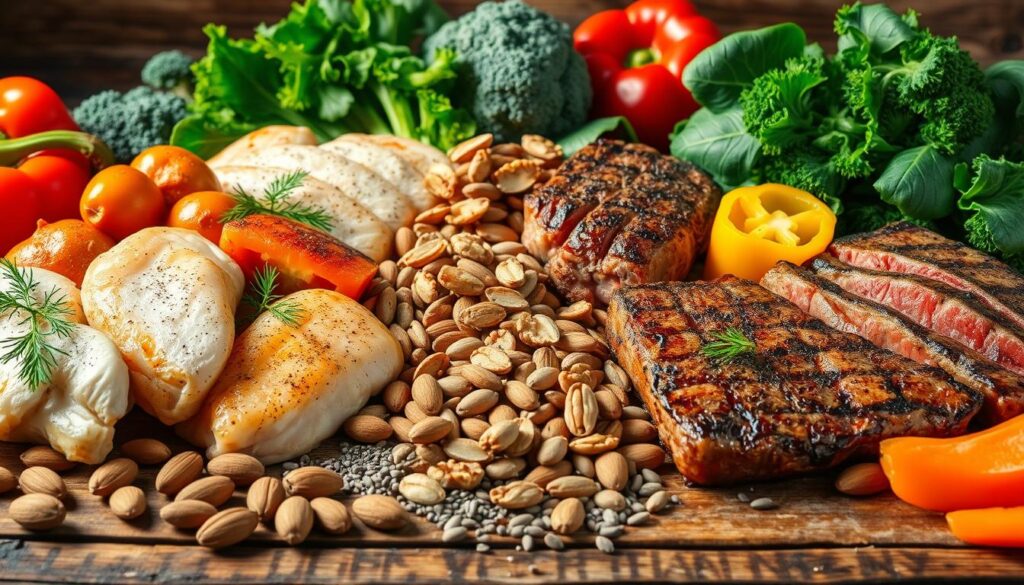
A high-protein diet can help preserve muscle mass and metabolism during calorie-burning weight loss. Increasing protein intake can also enhance feelings of fullness, reduce hunger, and lower calorie consumption, which supports weight loss. To boost calorie burning, include several servings of protein-rich foods in your daily diet.
Optimal Protein Intake for Fat Burning
Research suggests that consuming 25-30% of your daily calories from protein can significantly reduce appetite and increase feelings of fullness. For active individuals focused on fat loss, aiming for 1.6-2.2 grams of protein per kilogram of body weight daily may be optimal. Distributing protein intake evenly throughout the day (20-30g per meal) may be more effective for muscle preservation.
Best Protein Sources for Weight Management
Complete protein sources like eggs, lean meats, fish, and dairy provide all essential amino acids your body needs for muscle maintenance and growth. Plant-based proteins like legumes, tofu, tempeh, and seitan can be excellent options for vegetarians and vegans seeking fat loss. Incorporating these protein-rich foods into your diet can help you feel full and support your overall weight management goals.
Essential Tips for Burning Fat Through Dietary Changes
Effective fat burning starts with the right dietary changes, which can significantly impact your weight loss journey. By making informed choices about the food you eat, you can enhance your metabolism and burn fat more efficiently.
One of the most impactful dietary changes you can make is reducing refined carbohydrates. Refined carbs, such as white bread and sugary foods, cause rapid blood sugar spikes and crashes, leading to increased hunger and fat storage. Replacing these with whole grain alternatives provides more fiber, which slows digestion and helps maintain stable blood sugar levels.
Reducing Refined Carbohydrates
Lowering your intake of refined carbs can be very beneficial for losing fat, including abdominal fat. Studies have shown that people who consume the most whole grains are less likely to have excess abdominal fat compared to those eating mostly refined grains. For instance, the Framingham Heart Study found that individuals with the highest consumption of whole grains were 17% less likely to have excess abdominal fat.
- Replace white bread with whole grain bread.
- Choose brown rice over white rice.
- Limit your intake of sugary foods and drinks.
Incorporating Healthy Fats
Incorporating healthy fats into your diet is another crucial strategy for burning fat. Healthy fats, such as those found in avocados, nuts, seeds, and olive oil, help slow digestion and promote feelings of fullness, potentially reducing overall calorie intake. Additionally, medium-chain triglycerides (MCTs) found in coconut oil may boost metabolism and promote fat burning more effectively than other fats.
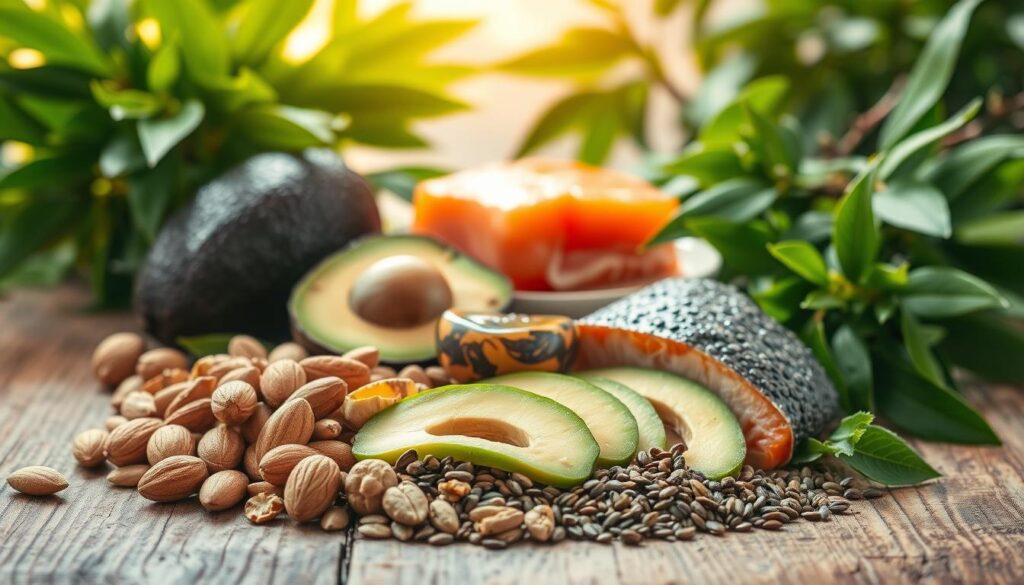
By combining these dietary changes, you can create a diet that supports your fat loss goals. Cutting back on added sugars and transitioning to a whole-food diet can naturally reduce calorie density while increasing nutrient intake, supporting both fat loss and overall health.
The Role of Fiber in Fat Loss
Fiber plays a significant role in fat loss, and its benefits extend beyond just digestive health. A high-fiber diet can help individuals achieve their weight loss goals by promoting feelings of fullness and reducing overall calorie intake.
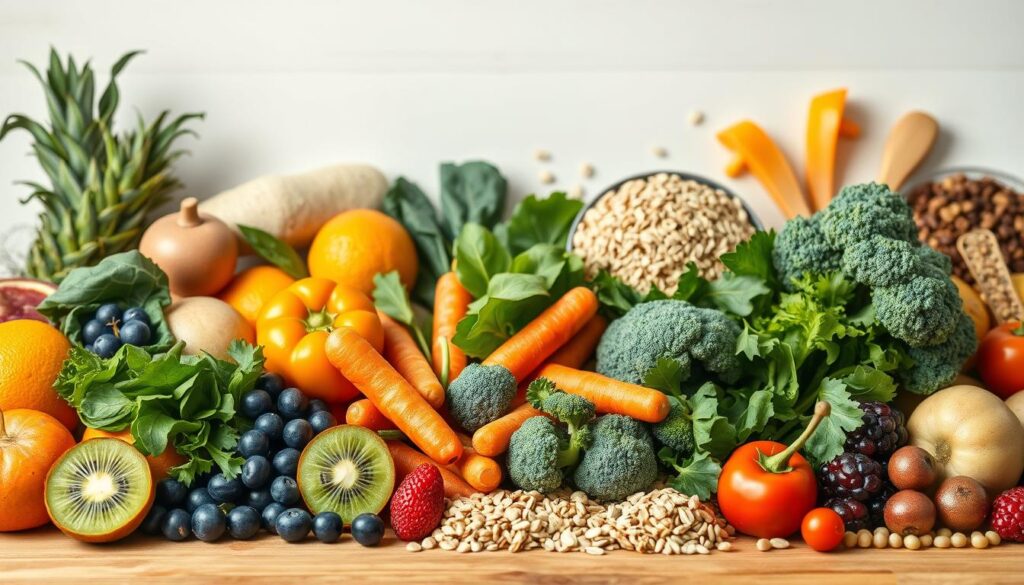
Soluble vs. Insoluble Fiber
There are two main types of fiber: soluble and insoluble. Soluble fiber, found in foods like oats, beans, and fruits, forms a gel-like substance that slows digestion, helping you feel fuller longer. On the other hand, insoluble fiber, found in whole grains and vegetables, adds bulk to stool and supports gut health.
Top Fiber-Rich Foods That Support Fat Burning
Incorporating high-fiber foods into your diet can significantly support fat loss efforts. Some of the top fiber-rich foods include:
- Beans and legumes
- Artichokes and other vegetables like broccoli and Brussels sprouts
- Fruits such as raspberries and pears
- Whole grains like oats and barley
These foods not only provide fiber but also offer other nutrients that support overall health and weight management.
Smart Beverage Choices for Enhanced Fat Burning

Choosing the best beverages for fat loss can be a game-changer in your weight management journey. Switching from sugary drinks to healthier alternatives is one of the simplest ways to enhance calorie burning. Sugary beverages like soda and fruit juice are often high in calories and low in nutritional value. Alcohol is also calorie-dense and can lower inhibitions, sometimes leading to overeating.
Benefits of Green Tea and Coffee
Green tea is an excellent beverage choice for fat loss. It contains caffeine and is rich in antioxidants, both of which can enhance fat burning and boost metabolism. Research shows that drinking 2-3 cups of green tea daily can increase fat burning by up to 17% during moderate-intensity exercise. Coffee also contains caffeine, which can temporarily boost metabolism by 3-11% and increase fat burning.
Beverages to Avoid When Trying to Burn Fat
It’s equally important to identify beverages that hinder fat loss. Sugar-sweetened beverages like soda, fruit juice, and sweetened coffee drinks can add hundreds of empty calories to your diet and are strongly linked to increased belly fat. Alcohol is particularly problematic for fat loss because it’s calorie-dense and forces your body to prioritize metabolizing alcohol over burning fat.
Intermittent Fasting: A Time-Based Approach to Fat Loss
Intermittent fasting, an eating pattern that involves regular periods of fasting, has gained popularity for its potential to enhance fat burning. This approach to weight loss involves cycling between periods of eating and fasting, which can lead to significant reductions in body fat.

Research suggests that intermittent fasting may enhance weight loss and fat reduction by limiting the eating window, naturally reducing calorie intake without strict calorie counting. During fasting periods, insulin levels drop significantly, making stored body fat more accessible as an energy source.
Popular Intermittent Fasting Methods
Several methods of intermittent fasting have gained popularity due to their simplicity and effectiveness. The 16/8 method, which involves fasting for 16 hours and eating during an 8-hour window, is one of the most popular approaches. Another method is the 5:2 diet, where individuals eat normally for five days of the week and restrict calories to 500-600 on the other two days.
Other methods include Alternate-day fasting, which alternates between normal eating days and fasting or very low-calorie days, and Eat Stop Eat, which involves fasting for 24 hours once or twice a week. These methods offer flexibility and can be tailored to suit individual lifestyles and preferences.
How Fasting Affects Fat Metabolism
After 12+ hours of fasting, the body increases production of human growth hormone (HGH), which promotes fat burning and muscle preservation. Intermittent fasting can also improve metabolic health by reducing inflammation, improving insulin sensitivity, and promoting cellular repair processes like autophagy.
Combining intermittent fasting with resistance training may help preserve muscle mass while maximizing fat loss. Studies have shown that intermittent fasting can reduce body weight by 3-8% and body fat by 4-7% over periods of 3-24 weeks, making it a viable strategy for those looking to lose weight and improve overall health.
Sleep Quality and Fat Burning: The Crucial Connection
Adequate sleep is essential for maintaining a healthy weight, as it affects hunger hormones and metabolism. Studies have shown that sleep deprivation can lead to weight gain and increased risk of obesity.
How Sleep Deprivation Affects Weight Gain
Sleep deprivation disrupts the balance of hunger hormones, increasing ghrelin (which stimulates appetite) and decreasing leptin (which signals fullness). This can lead to overeating and poor food choices, ultimately resulting in weight gain. Research has also shown that people who sleep less than 7 hours per night are 33% more likely to gain weight than those who get 7-9 hours of sleep.
Tips for Improving Sleep Quality
To improve sleep quality, it’s essential to establish a consistent sleep schedule and create a sleep-conducive environment. This can include avoiding screens before bedtime, limiting caffeine after noon, and avoiding alcohol before bed. By improving sleep quality, individuals can reduce their risk of weight gain and support their overall weight loss efforts.
- Establish a consistent sleep schedule to regulate your body’s internal clock.
- Create a sleep-conducive environment by ensuring the room is dark, quiet, and cool.
- Avoid screens for at least an hour before bedtime to reduce blue light exposure.

Stress Management for Effective Fat Loss
Managing stress is crucial for effective fat loss. Chronic stress triggers a cascade of hormonal reactions that can significantly impact body composition. When we experience stress, our adrenal glands produce cortisol, a hormone that promotes fat storage around the abdomen.
The Cortisol-Fat Connection
The relationship between cortisol and fat storage is well-documented. High cortisol levels increase appetite and drive weight gain, particularly around the abdominal area. Research has shown that individuals with higher stress levels tend to have higher levels of visceral fat, posing a significant health risk.
Stress-Reduction Techniques That Support Fat Burning
Engaging in stress-reduction activities can help mitigate the negative effects of cortisol on weight loss efforts. Techniques such as meditation, yoga, and deep breathing exercises can reduce cortisol production and promote a healthier body composition. Regular physical activity also acts as a powerful stress reducer while burning calories and improving overall health, reducing the risk of obesity.
The Power of Tracking: Monitoring Your Fat Loss Journey
![]()
The key to successful fat loss lies in consistently tracking your eating habits and exercise routine. By monitoring your daily food intake and physical activity, you can make informed decisions to achieve your weight loss goals.
Food Journaling Benefits
Keeping a food diary or using an online food tracker can help you stay aware of your eating patterns, portion sizes, and nutritional choices. Research shows that people who log their food intake daily can lose up to twice as much weight as those who track less frequently or not at all.
Activity and Progress Tracking Tools
Regular weigh-ins and tracking body measurements can provide valuable insights into your progress. Additionally, wearable fitness trackers can increase physical activity by up to 40% through goal-setting, reminders, and social accountability.
Mindful Eating Practices That Promote Fat Loss
Mindful eating is a powerful approach that can help individuals develop healthier eating habits and support their weight loss journey. By paying full attention to the experience of eating and drinking, both inside and outside the body, individuals can enjoy their food more and potentially lose weight.
Distinguishing Between Hunger and Emotional Eating
One crucial aspect of mindful eating is learning to distinguish between physical hunger and emotional hunger. Physical hunger develops gradually and can be satisfied with any food, whereas emotional hunger comes on suddenly and typically craves specific comfort foods. Recognizing this difference may help individuals make better food choices during meals.
Practical Techniques for Mindful Eating
Several techniques can facilitate mindful eating. These include sitting down to eat, avoiding distractions like TVs and phones, eating slowly, and savoring food. Using smaller plates and bowls can also naturally reduce portion sizes. Additionally, practicing a hunger-fullness scale before, during, and after meals can help identify appropriate eating amounts. Some key mindful eating practices include:
- Eating slowly and chewing thoroughly to allow the brain to register fullness signals.
- Removing distractions while eating to reduce unconscious overeating.
- Using smaller plates and bowls to naturally reduce portion sizes.
- Practicing gratitude for food and considering its source.
By incorporating these mindful eating practices, individuals can develop a healthier relationship with food and support their weight loss efforts.
The Gut-Fat Connection: Probiotics and Fat Burning
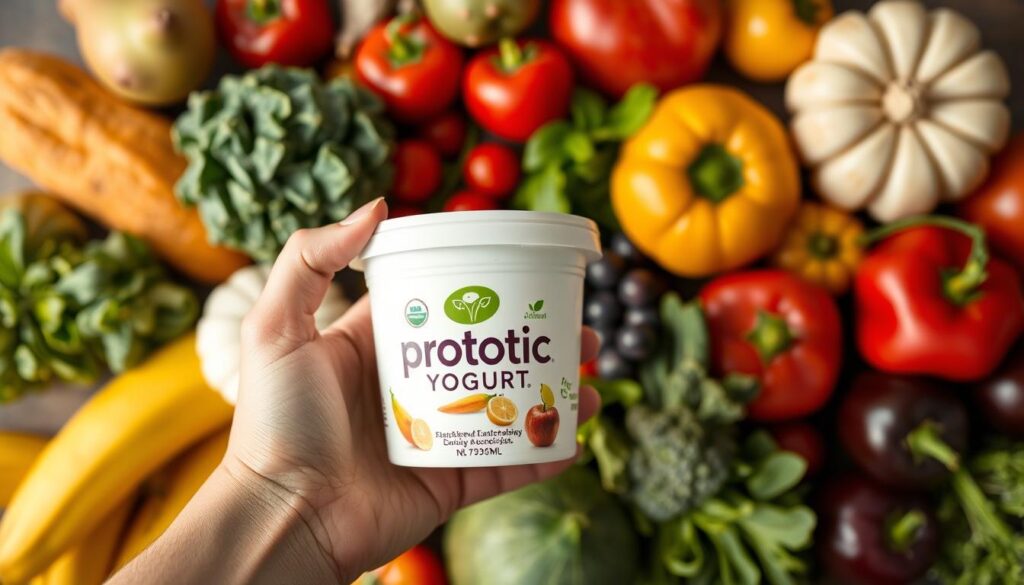
The human gut microbiome plays a pivotal role in how our bodies process and store fat. Research has shown that the composition of gut bacteria can significantly influence weight management.
How Gut Health Influences Weight Management
Your gut microbiome, the collection of bacteria in your digestive tract, is crucial in processing and storing food. Studies have indicated that individuals with obesity tend to have different gut bacteria compositions compared to lean individuals, often with less bacterial diversity. Certain gut bacteria can extract more calories from food, promoting fat storage, while others may enhance fat burning and reduce inflammation.
Probiotic-Rich Foods and Supplements
Probiotics are beneficial bacteria that can help restore a healthy balance in your gut microbiome, potentially supporting weight management. A review of 15 studies found that probiotic supplementation led to significant reductions in body weight, BMI, and fat percentage compared to placebo. Specific probiotic strains, particularly those in the Lactobacillus and Bifidobacterium families, have shown promising results for fat loss.
To incorporate probiotics into your diet, consider consuming fermented foods rich in natural probiotics, such as yogurt with live cultures, kefir, sauerkraut, kimchi, and miso. Additionally, prebiotic foods like garlic, onions, leeks, asparagus, and bananas can feed beneficial gut bacteria, enhancing the effectiveness of probiotics.
Specialized Supplements That May Support Fat Loss
Certain supplements may aid in fat loss efforts when combined with a healthy diet and regular exercise. While no supplement can replace a balanced lifestyle, some evidence-based options may provide additional support.
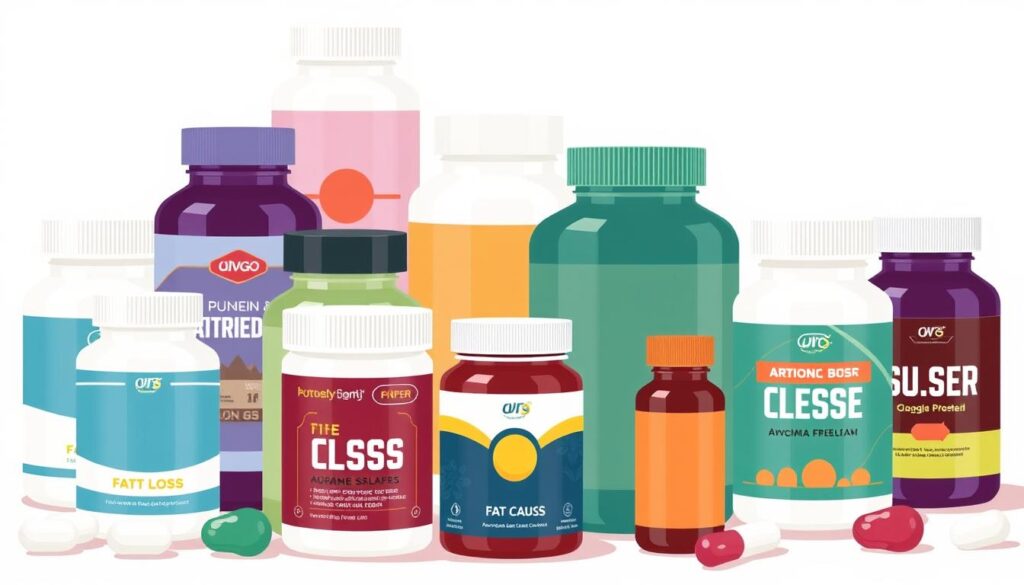
Evidence-Based Supplement Options
Some supplements have shown promise in supporting fat loss. Protein supplements, such as whey or plant-based proteins, can help increase overall protein intake, supporting muscle preservation during weight loss. Green tea extract contains catechins and caffeine that may slightly increase metabolism and fat oxidation. Soluble fiber supplements like glucomannan can increase feelings of fullness and reduce calorie absorption. Additionally, caffeine may boost metabolism and increase fat burning, especially when consumed before exercise.
Supplements to Approach with Caution
Many fat-burning supplements contain multiple ingredients with little research supporting their effectiveness or safety. Supplements marketed as “fat burners” often contain stimulants that can cause side effects like increased heart rate, anxiety, digestive issues, and sleep disturbances. It’s crucial to consult with a healthcare provider before starting any supplement regimen, especially if you have existing health conditions or take medications.
Creating a Sustainable Fat-Burning Lifestyle
Creating a sustainable fat-burning lifestyle involves more than just short-term dieting or extreme exercise. It’s about adopting habits that you can maintain over the long term, ensuring that your weight loss is not only achieved but also sustained.
Combining Multiple Strategies is key to optimal results. Research shows that integrating improved nutrition, regular exercise, adequate sleep, and stress management yields better outcomes than relying on a single approach. This multi-faceted strategy supports overall health and enhances fat loss.
Combining Multiple Strategies for Optimal Results
To achieve effective weight loss, consider combining different evidence-based methods. This could include dietary changes, such as reducing refined carbohydrates and increasing protein intake, alongside regular physical activity like strength training and High-Intensity Interval Training (HIIT) Making gradual, consistent changes is more effective than drastic overhauls that are hard to maintain.
Avoiding Common Fat Loss Plateaus
Weight loss plateaus are a normal part of the fat loss journey. To overcome them, it’s essential to vary your exercise routine, reassess your calorie needs, manage stress effectively, and ensure you’re getting quality sleep. Focusing on non-scale victories like improved energy levels, better sleep quality, and enhanced mood can also help maintain motivation.
Building a support system and finding enjoyable physical activities can significantly increase your long-term adherence to healthy habits, making your fat loss journey more sustainable.
Conclusion: Your Personalized Approach to Fat Burning
The path to effective fat burning is not a one-size-fits-all solution, but rather a tailored strategy that suits your lifestyle and preferences. To achieve sustainable weight loss, it’s crucial to experiment with different combinations of the evidence-based tips covered in this article.
As you create your personalized plan, remember that sustainable fat loss typically occurs at a rate of 1-2 pounds per week. Focus on progress, not perfection, and celebrate non-scale victories like improved energy, better sleep, and increased strength.
- Be patient with your body and adjust your expectations to align with healthy, sustainable fat loss.
- Consider working with healthcare professionals to create a personalized plan that addresses your specific needs.
- Focus on making consistent changes that enhance your overall quality of life.
By adopting a balanced diet and regular exercise routine, you can achieve significant results over time. Remember, the most successful approach to fat burning is one that improves your overall health and well-being, rather than diminishing it.
